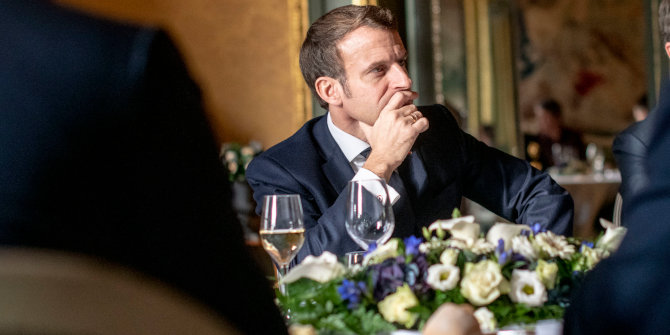Geert Wilders’ Party for Freedom won the largest vote share in the Dutch general election on 22 November. Philippe Mongrain, William Bruce, Ruth Dassonneville and Michael S. Lewis-Beck reflect on their popular vote forecast for the election and the uncertainty over who will lead the country’s next government.
The Dutch will soon have a new prime minister after 13 years of Mark Rutte in power. Preelection polls indicated a three-way race, essentially between Rutte’s VVD, the radical right Freedom Party (PVV) of Geert Wilders, and the red-green (GL-PvdA) alliance led by former European Commissioner Frans Timmermans.
In the end, these parties won most votes and seats, but not in the expected order. With close to 24% of the vote and 37 seats, the PVV came out on top, even surpassing the most optimistic expectations. The joint list of the GL-PvdA came in second with 15.5% of the vote and 25 seats, closely followed by the VVD (15.2% and 24 seats). The centre-right and newly-formed New Social Contract (NSC) of Pieter Omtzigt, which was the election favourite for a time, lost its momentum in the last stretch of the campaign, but could still be instrumental in the formation of the new Dutch government.
Revisiting our forecast
A month and a half ago, we published a popular vote forecast for the ruling VVD. Our model, which is based on the previous election results, the state of the economy and the time spent in office by the prime minister’s party, predicted a score of 14.9% for the VVD. In the end, Rutte’s party, now led by Dilan Yeşilgöz-Zegerius, received 15.2% of the vote. As such, our model was essentially spot on, outperforming other forecasting methods, such as vote intention polls, which estimated the VVD would obtain between 17 and 19% of the vote. Vote intention polls included more error for other parties, with a particularly low estimate for the PVV of around 18%.
We first applied this model to the 2017 elections with a forecast of 22.3% of the vote for the governing VVD, a one percentage-point error, far-below the error of most pre-election polls published at the time. With the COVID-19 pandemic, this initial model had to be modified to take into account the uncertainty created by the public health crisis. We hypothesised that exogenous shocks would promote support for “safe” establishment candidates and incumbents. Leaving COVID-19 out of the model, our prediction for the VVD would have been lower, at 13.5%. Thus, even though health measures and restrictions have been lifted for quite some time, it seems the pandemic has enduring consequences which still reverberate on voters’ behaviour.
What next?
The result of the Dutch election, which was characterised by a high level of fragmentation, also highlights the limitations of our forecasting model. Inspired by work in other settings, we developed a model that focuses on predicting the vote for the party of the incumbent prime minister, based on the premise that this party is held accountable for the state of the economy. As such, our forecasting approach provides an estimate for a single party. Even though the electoral strength of this party can give an indication of the likelihood of the party remaining in government, the dynamics of a governing coalition are more complex in the Netherlands.
As the strongest party in the Dutch parliament, the PVV will now be seeking coalition partners. As forecasters, we are especially concerned with the outcome and the timing of that process. It will likely take some time before the new coalition is formed. After the 2021 elections, Dutch voters had to wait a long time – 271 days – before a new coalition agreement could be reached.
Then, we have the question of the political complexion of the coalition: will it be dominated by right, left or centre parties? The prime minister traditionally comes from the party with the most seats in the Tweede Kamer, but that does not guarantee Wilders will take the premiership. Clearly, an immediate forecasting task concerns the prediction of the partisan shape of the next governing coalition.
Note: This article gives the views of the authors, not the position of EUROPP – European Politics and Policy or the London School of Economics. Featured image credit: Hung Chung Chih/Shutterstock.com



